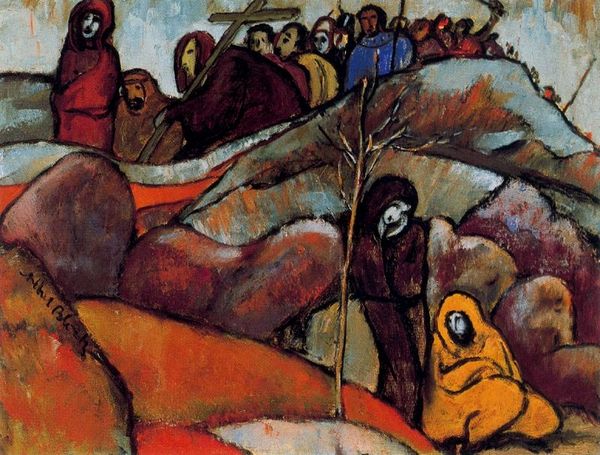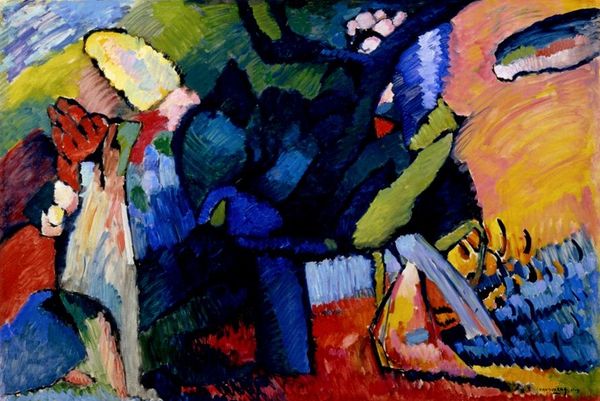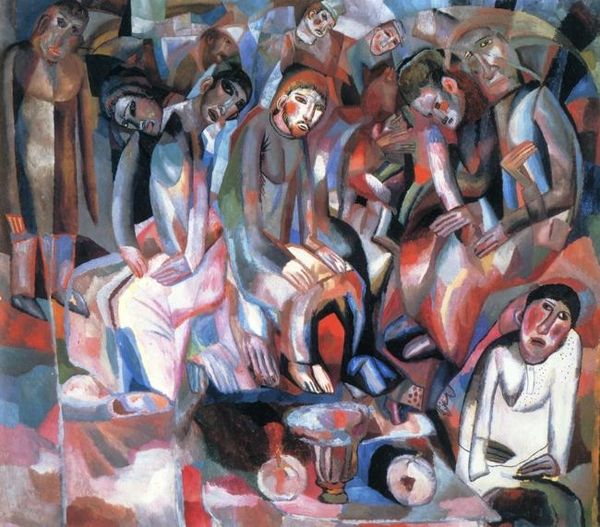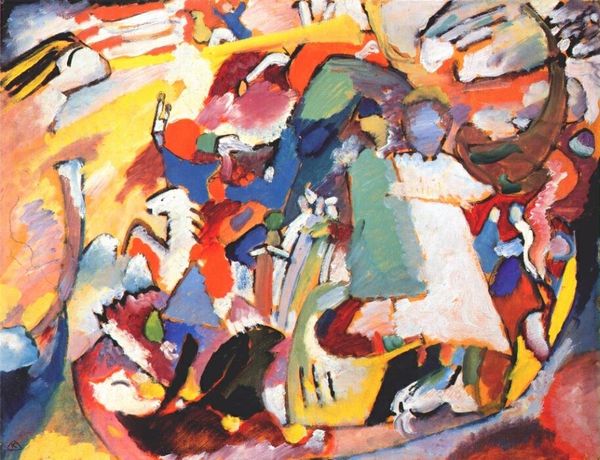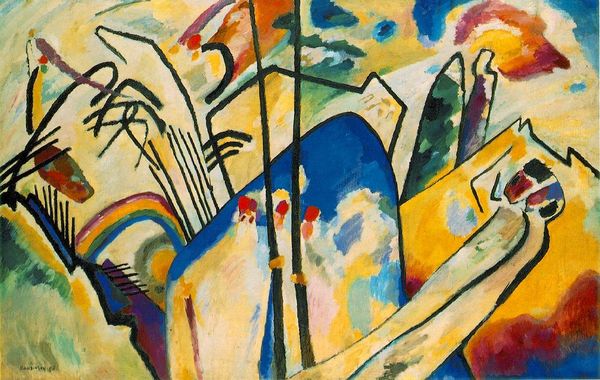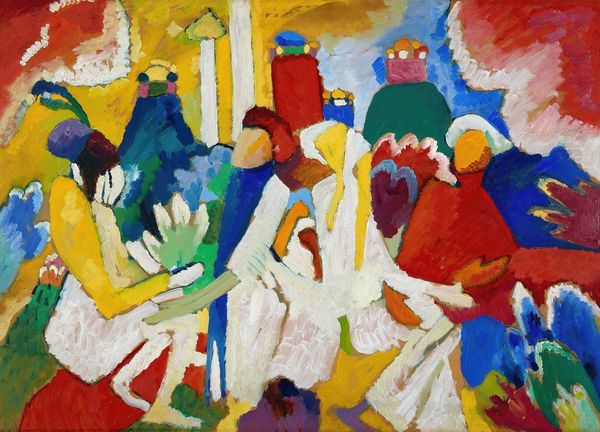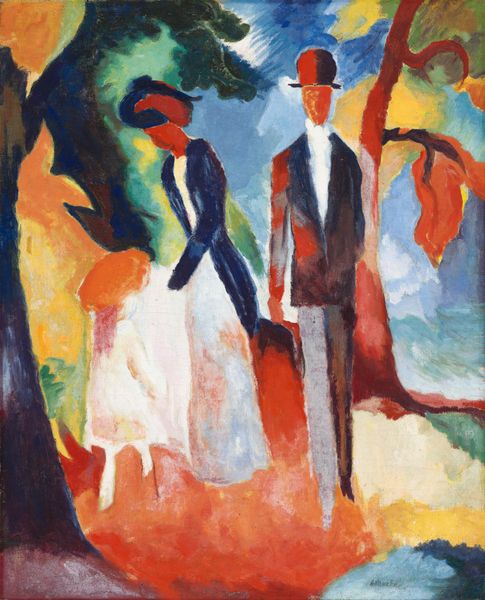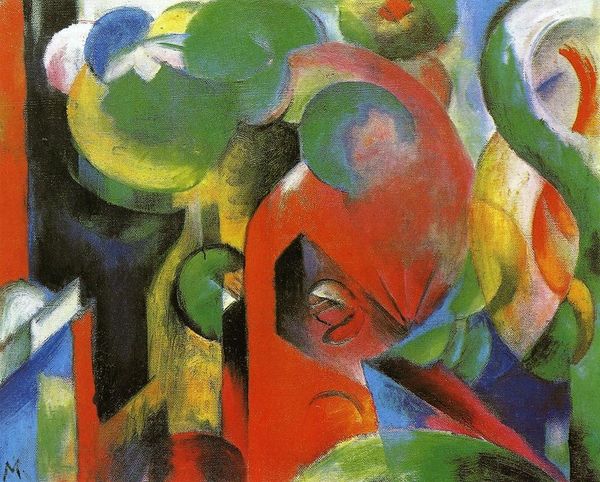
Copyright: Public domain US
Editor: We’re looking at "Duel," painted by Albert Bloch in 1912. It seems like a chaotic scene, rendered in strikingly unnatural colors, almost dreamlike. There's a sense of dramatic tension, but also a strange stillness. What formal elements stand out to you? Curator: The composition strikes me immediately. The figures are arranged not to tell a literal story, but rather to explore the relationships between forms and colours. Observe how Bloch uses colour not descriptively, but expressively. The landscape isn't green and brown; it's a riot of oranges, reds and blues which serve to heighten the emotional impact. Editor: Yes, it's like the landscape itself is reacting to the scene! Do you think the distortions of the figures relate to Expressionist ideas? Curator: Precisely. Note how the figures lack precise detail; Bloch favours bold strokes and blocks of colour to communicate raw emotion over realism. It is critical how the tilting lines create dynamism and unrest, contrasting with the stasis of death. Is this about a realistic dual? Editor: Probably not, but in a visual and theoretical sense, where does this artwork push the concept of dualism and struggle? Curator: The semiotics and chromatic tension across Bloch’s art are a reminder of human violence. Editor: I hadn't thought about how the brushstrokes emphasize movement and disruption. Now I'm starting to see those clashing color palettes and discordant lines in a whole new light. Curator: This close formal analysis illuminates not just what we see, but how Bloch wants us to feel.
Comments
No comments
Be the first to comment and join the conversation on the ultimate creative platform.

